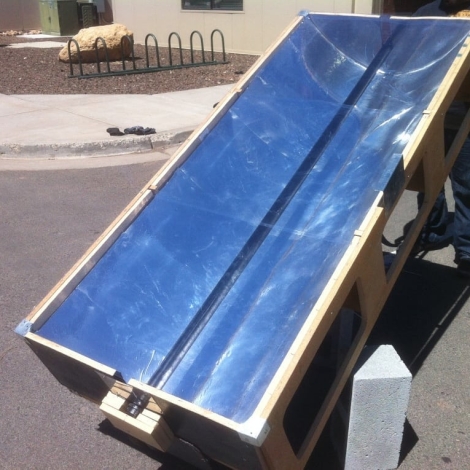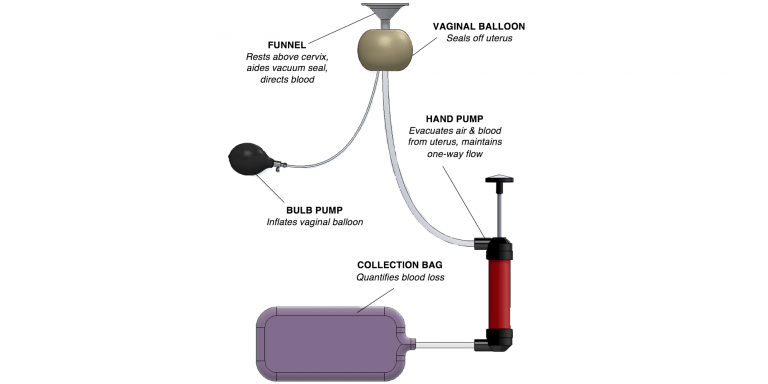
Photo courtesy of Adam Compton
In this series, we feature technological solutions that our members have proposed. If you or someone you know has developed project that can make a difference in an underserved region and you think we should post about it, please write to solutions [at] engineeringforchange [dot] org.
Sterilizing medical instruments after use can be a tricky process. Destroying disease-carrying organisms requires both heat and pressure. Twenty minutes in an autoclave, a pressurized steam chamber, is the usual method. But the lack of such equipment puts rural health centers in the developing world in a difficult position. They must send their used instruments away for sterilization. And even if an autoclave is available, intermittent electricity service in rural areas can hold up the process. Those delays can put off medical procedures.
A new solar autoclave design addresses those problems, says a team from Northern Arizona University. Their prototype features a reflective parabolic trough that, when placed in the sun, heats water and channels steam into a pressure cooker. It is made from widely available materials that may not be a problem to find in many developing regions. The details are in this report (pdf) on the team’s project Web site.
Photo courtesy of Adam Compton
How big is this problem?
About 3 billion people receive primary medical care in rural clinics in developing countries, the World Health Organization reports. The rate of infections contracted in the hospital in those regions is 5 – 19 percent. By comparison, 4.5 percent of US patients are infected during hospitalization.
The rate of exposure to non-sterile syringes ranges from 40 – 70 percent in some countries, according to Adam Compton, a mechanical engineering student at NAU who is working on the prototype. Lax sterilization and the reuse of equipment are major factors in the higher infection rate, Compton says.
What’s different about this design?
Experts at the WHO have endorsed the solar autoclave concept. The organization recognized a design by a team at MIT as an innovative health technology.

Photo courtesy of Adam Compton
We’ve reported on the MIT prototype before. The device heats water in a wine bottle suspended over a reflective dish and, like the NAU design, it sends the steam into a pressure cooker. The concepts are similar with a few differences, as Brent Nelson, an assistant professor of mechanical engineering at NAU explains.
“The design was built with an emphasis on durability, and each component was designed to be replaceable, constructable, and maintainable on-site in a remote area with limited access to western products. The [MIT] autoclave… used a parabolic dish, which is difficult to manufacture if you don’t have access to a satellite dish, and the glass wine bottle will have limited durability,” Nelson says.
Progress update
Compton gave us an update on his team’s progress.
“At the end of the system the autoclave nearly hit perfect sterilization temperature. Unfortunately, small heat losses and poor weather conditions limited the autoclave’s ability. Under better weather conditions our team is confident that this autoclave will hit the required temperature to confirm complete sterilization. The real importance of this project is that we have proved the concept, medical sanitation is possible using limited resources and only the power generated by the sun,” Compton says.
In the next steps, the NAU team plans to seek international partners for further development and testing. For updates please check the project Web site.
Related resources
Ten medical devices for off-grid clinics
From a bicycle ambulance to a solar vaccine fridge, ten devices that work without an outlet.
Five questions with Dr. Daniel Mollura
The founder of RAD-AID discusses imaging technology for healthcare in underserved regions.
Rats are on the front lines of the tuberculosis fight
In detecting disease, rats’ noses are quicker than microscopes.


